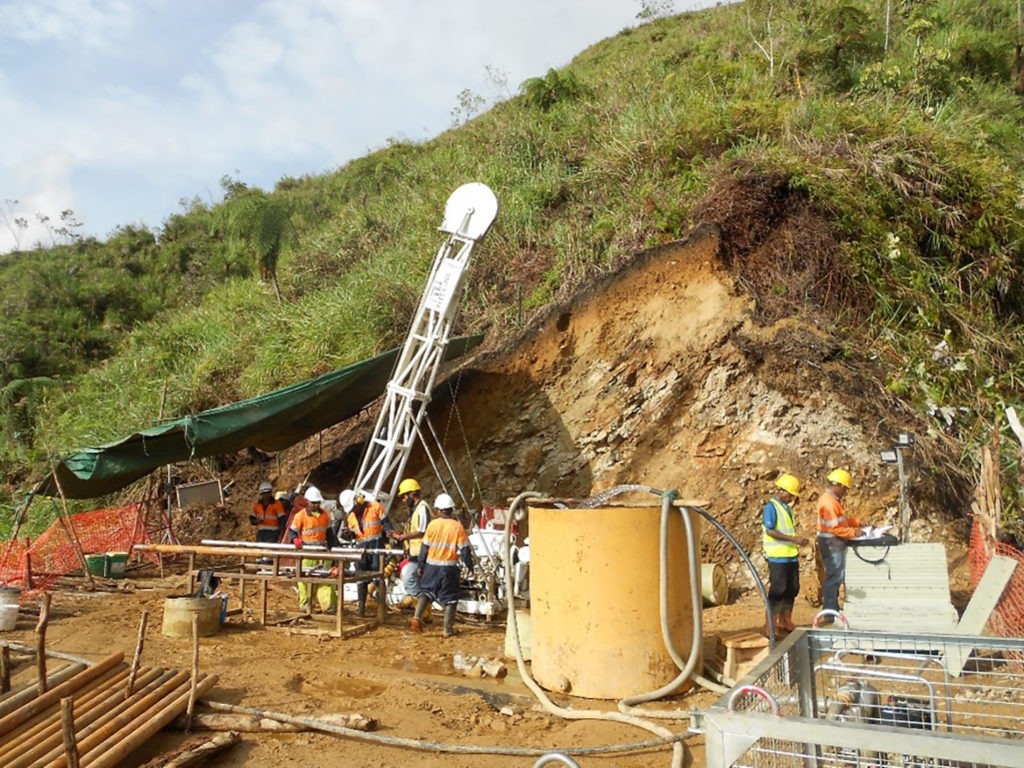JV Article: SRK Consulting helps miners maximize the value of resource drill programs


Mineral exploration is at the front end of the mining industry, and the discovery of new orebodies is vital to meeting the increasing demands of a growing world population.
However, finding new orebodies, particularly ones sufficiently enriched to become working mines, is hugely challenging.
Even after a discovery has been made, “defining the size, grade, and continuity of the mineralization, and then estimating its mineral resource or reserve can be extremely costly and time-consuming,” says Justin Smith, principal consultant at SRK Consulting.
“With exploration budgets continually being squeezed, geologists need to design and execute drill programs that maximize the value of exploration and resource drilling – usually as additional profitable resources or reserves.”
Although there are various methods for ranking and prioritizing drill targets based on depth, expected grade, volume, and general continuity of a potential orebody, the quantification of the potential value of each planned drill hole “is rarely performed by companies," he says.
For many exploration companies, he adds, testing the effect of a drill hole “is simply considered unnecessary, as the most interesting geology can be seen on a cross section and then targeted.” However, he says this assumption can often “be risky and lead to wasted drilling dollars.”
Smith, who has over a decade of experience in mine planning and engineering, says that explorers should “view mining projects as a business” and, as such, should ensure that “expenditures maximize the potential profit.”
He says that once a resource estimation is incorporated into a geological model, modern modelling software can perform pit or stope optimization runs, allowing drilling campaigns to be designed and tested “much faster today than even ten years ago.”
"The impact a drill hole is likely to have on the value of a deposit can then be tested before any investment in actual drilling is made, potentially eliminating the cost of drilling a hole that adds no value to the deposit."
Smith says the process doesn’t require expensive software packages supported by specialized consultants, with geological modelling software, like Seequent’s Leapfrog Geo, providing a quick and relatively inexpensive solution.
“Provided a company has sufficient existing model data and reasonable geologic and grade models, a basic geological modelling package and optimization software can allow them to plan more cost-efficient and effective resource drilling campaigns.”
To illustrate a real-world application of the process, he described its implementation at the Yandera copper project in Papua New Guinea, owned by Era Resources Inc. (In 2021, the Canadian junior exploration company Freeport Resources acquired Era.)
“Yandera is a large, low-grade porphyry copper deposit located in very steep mountains in the jungles of Papa New Guinea. The corporate focus was to bring more ore tonnes into the project’s resource to increase its value,” Smith explains.
The terrain and scattered grade distribution, he says, led to numerous possible drill targets, with each target requiring drill pads cut into the side of mountains and helicopters to haul in equipment. In addition, he adds, the monsoon season was also approaching.
“The number of drill targets, expensive drilling costs, and short drilling season, meant that a more sophisticated approach to prioritize the drill targets was required,” he says.
Using planned hole data and expected intercepts and grades provided by Yandera’s geologists, Smith modelled “virtual ore zones” and then fed these into automated resource estimation programs.
“We then re-estimated the resource model, filling the newly defined virtual ore zones with grades, and a pit shell was generated,” he explains. “Each drill hole's expected impact on the in-pit resource was then evaluated, and the drilling program prioritized accordingly.”
He noted that the entire process, which included over 100 planned holes, took less than two days.
As the drilling program progressed, Smith assessed sampling results in near real-time and the planned holes were adjusted to reflect the real-world drilling results. The model was then re-run, and target priorities adjusted.
“In total, four modelling iterations were run, leading to changes to the planned drill program, with the subsequent investment in drilling increasing in areas that outperformed the virtual model and abandoned in underperforming areas.”
He says the new approach yielded a 20% increase in the mineral resource by increasing the drilled metres by less than 5%.
“Quantifying the possible value of a resource drilling campaign before drilling can reduce the risk associated with exploration and help to maximize the return on that investment,” Smith says.
The preceding Joint Venture Article is PROMOTED CONTENT sponsored by SRK CONSULTING and produced in co-operation with The Northern Miner. Visit www.srk.com for more information.
Comments